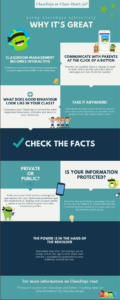The Technologist module by eCampus Ontario presents the scenario of a Teacher looking to make their classroom atmosphere more engaging through the use of technology. The first and most important key term in the module refers to digital literacy. It is important to understand one’s digital literacy before incorporating any technology into one’s lessons. Developing one’s digital literacy is an ongoing process with which technology will continue to grow. It is also important to note that technology is best incorporated with design-thinking, where students share in finding a solution to their problem. This module offers a 6-step process in design-thinking which I outline in the attached Youtube video. These steps include:
- Empathizing with your students and their needs
- Defining the challenge that faces your students
- Form an ideal way technology will be incorporated
- Create a prototype
- Connect it to the curriculum
- Test your creation
These steps are easy to follow if you understand each along the way. I will let my video explain each in more detail, but ultimately it is important to choose a form of technology that will blend seamlessly into your classroom. One that can be understood and used by most if not all learners and will help resolve a challenge that may be facing them. It is important not to pick a new website or app that you may not be comfortable with, if you do not have any means of learning it beforehand. The best creations are refined before entering the classroom but are still simple enough to understand that students will be able to catch on quickly.
In this multimedia reflection, I decided to try out iMovie and make a YouTube vlog style video. I am happy with the outcome and had a blast creating something that I found amusing and hope that others will, too. The video ran longer than my original script had accounted for, so I had to cut a few elements from it. After some edits, I remained in the 5min range, so I am not too concerned about cutting much more out of it. iMovie is simple to use for Mac users, and I recommend it to those who are just trying to go for a rant style video over something technologically savvy.


